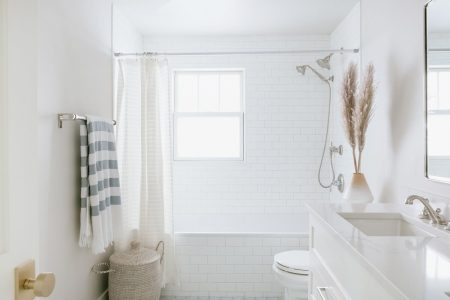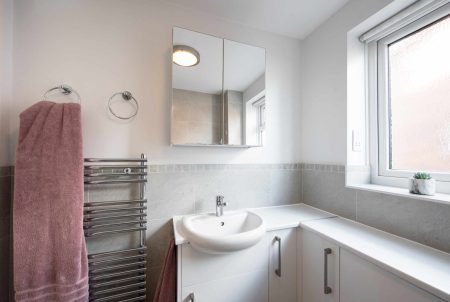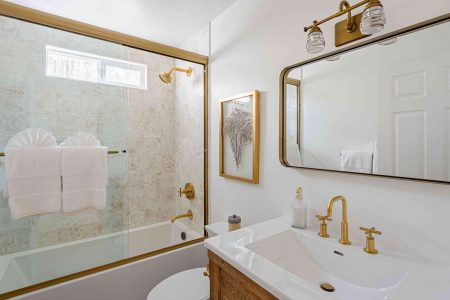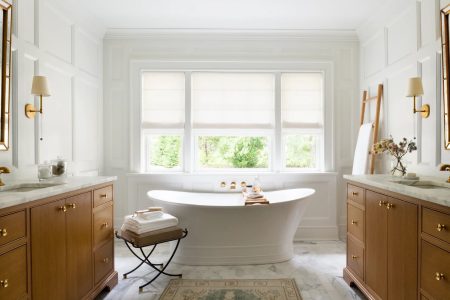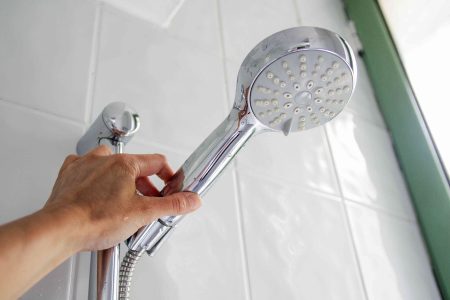Like the wiring in other parts of the home, the electrical service in bathrooms must follow the code requirements set forth by your local building inspections office. Over the years, these requirements have become more exacting as the code strives to keep pace in increasing electrical demands in bathrooms.
Most electrical code requirements for homes are based on the NEC (National Electrical Code). The NEC is an official document assembled by a committee of electricians and building professionals, aimed by providing minimum safety standards for wiring installations. It is revised every three years (2014, 2017, 2020, etc.), and although the changes enacted in new editions are usually minor, it is a good idea to always check the latest edition of the NEC when planning a new bathroom.
Remember that your local code always supersedes the NEC. While most local codes are based on the NEC, this is not always the case. Local codes may have more relaxed requirements than the NEC, or in rare instances, they may have more exacting standards.
Some homeowners are startled to learn that their existing bathroom wiring does not meet the current code requirements. This usually is no cause for worry. The latest code provides requirements aimed at new construction or major remodeling jobs where the bathroom footprint is being expanded. Existing bathrooms in older homes will rarely meet all these requirements, and homeowners are usually allowed to do routine repairs and remodeling without bringing the entire bathroom “up to code.” For example, in an older bathroom served by a single electrical circuit, you are usually allowed to replace light fixtures or outlet receptacles without going as far as adding the additional circuits required for new construction.
When a professional electrician performs work on your bathroom, he or she will be aware of what types of code upgrades are mandatory, and when existing wiring configurations can remain as they are. If you are doing the wiring yourself, consult your local building inspections office for advice.
But anytime you are doing major remodeling, you should keep an eye on what the current code requirements are for new construction. Where possible, bringing your bathroom fully up to code will make it safer, as well as making it more appealing to future buyers.
Number of Circuits
Although a bathroom may seem like a small space that might effectively be served by a circuit extension off an adjoining room, the NEC now requires at least two dedicated circuits for each bathroom:
- A 20-amp receptacle circuit for plug-in appliances. All receptacles must be AFCI and GFCI-protected, either by circuit breakers or individual receptacles that offer AFCI and GFCI protection.
- Light fixtures and wall switches must be on a separate circuit. A 15-amp circuit is minimum, but this is often a 20-amp circuit, especially if there is a heat lamp integrated into this circuit. The vent fan may be powered by this circuit.
- A separate circuit is required for a whirlpool tub or any other large fixture or appliance in the bathroom.
While the NEC suggests that bathrooms circuits must be dedicated to the bathroom and not serve other rooms, your local jurisdiction may allow it, so check with your local building inspections on this.
Bathroom Lighting
The NEC requires at least one permanently mounted light fixture in a bathroom. This can be a ceiling light, combination vent fan/light fixture unit, or a vanity area light.
Most bathrooms, however, add at least one other light fixture, often a wall-mounted vanity light above the mirror or a pair of wall sconces on the sides of the mirror. Lighting is a prominent need in bathrooms, and it is not uncommon for there to be three different lighting sources: a ceiling fixture, vanity lighting, and a third light in the shower or integrated with a vent fan. If you add a light within the shower stall, don’t forget the required waterproof lens to protect both you and the bulb.
Exhaust Fan
Most communities require bathrooms to have either a window that can be opened or an electric vent fan that will exhaust moisture from the bathroom to the outdoors. Some communities may require a vent fan even if there is a window in the bathroom. A vent fan certainly is a good idea, whatever the requirements are, since venting moist air is the single best way to prevent mold and mildew from growing in your bathroom.
A bathroom vent fan must be powerful enough to adequately remove moisture from the room and displace it outdoors. Vent fans are measured in CFM (cubic feet per minute). Check with your local retailer to purchase a fan unit with a CFM capacity that meets your bathroom’s square footage.
Some local codes allow you to control the fan by itself, while others require that the fan come on with lighting. There are also combination fixtures available that integrate lighting, the vent fan, and a heat lamp or blower-heater, all in one. Depending on the amperage draw of the unit, it’s possible this fixture will require a dedicated circuit of its own.
Outlet Receptacles
The minimum requirement for outlet receptacles in a bathroom is one GFCI-protected receptacle served by a 20-amp circuit. This is a bare minimum, however, and most bathrooms will have at least two receptacles, and often as many of four or five.
When considering bathroom receptacles, keep correct placement in mind. You should keep the receptacle outside of a zone measuring 3 feet horizontally and 8 feet vertically from the top of the bathtub or shower threshold. It should be at least 1 feet away from the sink but no more than 3 feet. Avoid positioning a receptacle over the center of the sink, where cords from hairdryers and electric shavers might hang down into the basin. Receptacles are best positioned a foot or so to the left or right of sink basins.
Depending on the size and depth of your bathroom, you may want to add a general outlet near the door to plug in a vacuum cleaner. If you happen to have a makeup table incorporated in the bathroom plan, that’s a great place for an outlet.
Read the full article here









